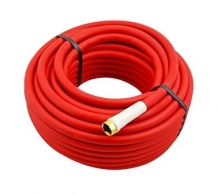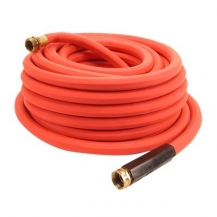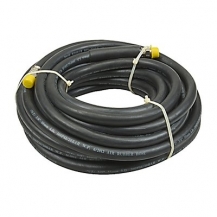Hot Water Hoses
Hot Water Hose: Your Helper On Heavy Cleaning Work
Hot water is a premium need in commercial kitchens, and it is ideal for washdown tasks. Carrying high-temperature water requires utmost care, considering the risks involved. A standard hose would fail to do the job, but hot water hoses are designed to withstand high temperatures. These heavy-duty hot water hoses can transfer hot water up to 180°F. They can also hold up pressures as high as 300 PSI. These ratings render hot water hoses ideal for janitorial and washdown jobs in an industrial kitchen.
Choosing the proper hot water hose can often be a critical issue. Garden hoses are usually made of vinyl. They cannot hold off high temperatures. When exposed to direct sunlight, a standard garden hose may heat the water inside up to 140◦F. Handling such a hose might readily result in scalds. To make matters worse, hot and pressurized water running through a standard garden hose could cause bursts. It would not be an excellent choice to depend on any hose for handling hot water.
What sets hot water hoses apart from an average hose is their reinforced rubber cover that can resist heat, high pressures, and bursts. The robust rubber design also enables them to remain flexible even in cold weather. Their crush-proof and leak-free brass hose fittings provide extra durability to work well under rugged conditions. These high-temp water hoses are typically red or gray to distinguish them easily from their standard counterparts. Therefore, a genuine hot water hose has a rubber construction, red or gray color, and is heavier.
After buying a hot water hose, you can take a few steps to minimize risks, such as leaving your hose in the sun is not advisable. Commercial hose reels are perfect for safer hose storage. Water resting inside a high-temp water hose can keep its temperature high for a long time. Therefore, let the water flow out before touching the hose water.




